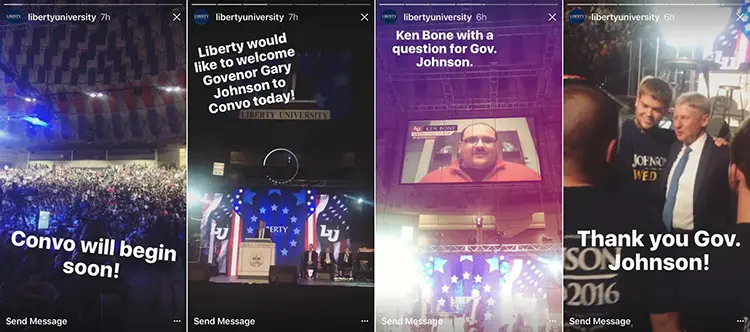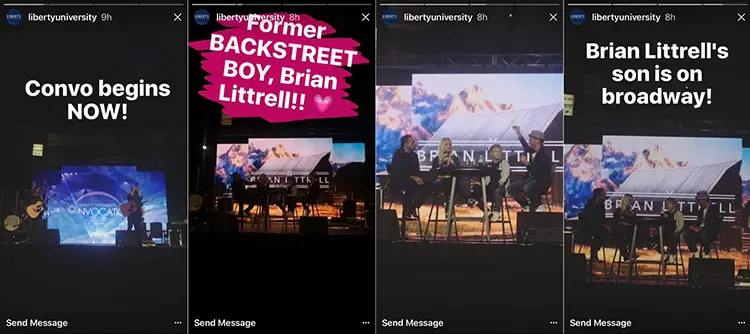
English professors may disagree, but in social media terms, the value of a picture may be significantly higher than a thousand words. Getting the tone right for text-based social conversations can be challenging (hence the helpful and/or cheesy social cues offered by emojis). But Instagram offers the perfect platform for showing off carefully-composed pictures of leafy campuses, glossy new facilities and victorious college athletes.
Given its campus roots, Facebook still dominates in terms of number of users. But institutions like Harvard and Stanford now boast six-figure Instagram followings, while Universities like Arizona State, West Virginia and Colorado State have earned a place on Hubspot’s Best College Instagram Accounts list.
So far, so good (and so many shots of beautiful campuses). But what to make of Instagram’s Stories feature, which appeared over the summer break? Drawing significant levels of inspiration from Snapchat’s My Story feature, Stories consist of a series of images, short videos (or a mix of the two) that disappear 24 hours after posting. Like Snapchat, and unlike Instagram’s main photo functionality, you can add text, doodle and, yes, add emojis to your Stories posts.
With the finite lifespan of Stories, you’re theoretically free from the kind of careful curation that can sometimes result in endlessly over-thinking that one perfect shot. You can use Stories can show a more spontaneous side of your institution. It’s worth noting that potential students can use geotagged images posted by current students to get a better picture of life on campus, as this Time article explains. Today’s students crave authenticity, whether you’re currently offering it or not, and Stories are one way to show a more spontaneous side of your school.
Another thing Stories offer is the chance to, well, tell stories. Even while the pics and videos you share may may be less polished, Stories let you group them together to take people from point A to B.
For example, the header image for this post features Stories posts from Liberty University, highlighting Libertarian presidential nominee Gary Johnson appearing at Liberty U’s Convocation speaker series (by comparison their main photo feed features just one shot of Gary and no Ken Bone!). Below, you can see how Colorado State brought their Cans Around the Oval food drive to live with a Story, and another Liberty U post with a visiting Backstreet Boy.


To post a Story, tap the plus sign in the upper left hand corner of your Instagram app screen. You can take a photo or hold the record button to take up to 10 seconds of video (and yes, as on Snapchat, most Stories are posted in the oft-derided vertical video format). There are on-screen pen and text options to add emojis, doodles and typed text. Tap the checkmark when you’re ready to share. You can also swipe down to access photos and videos from your camera roll, but only ones added in the last 24 hours.
Instagram Stories appear at the top of your followers feeds, as red-ringed circular channel icons. Prime real estate if you’re looking to reconnect with followers who may see less of your content since Instagram went from a reverse-chronological order feed to an algorithmic one. The platform also just announced that stories will now appear on the search and explore tab, potentially exposing your Stories to non-followers.
There is still plenty of debate about the value of platforms like Snapchat and Instagram to college recruiters. Of surveyed teens, 79% claimed to have never used Snapchat for college research (Chronicle of Higher Education – subscription required). However, Ad Age notes that Instagram is a more brand-friendly platform, for a variety of reasons, including searchability and the ability to build bigger followings. For any college trying to reach potential recruits on social media, Instagram’s Stories is starting to make a lot of sense.
Interested in enhancing your recruitment media mix on social? Give Kiosk a call.